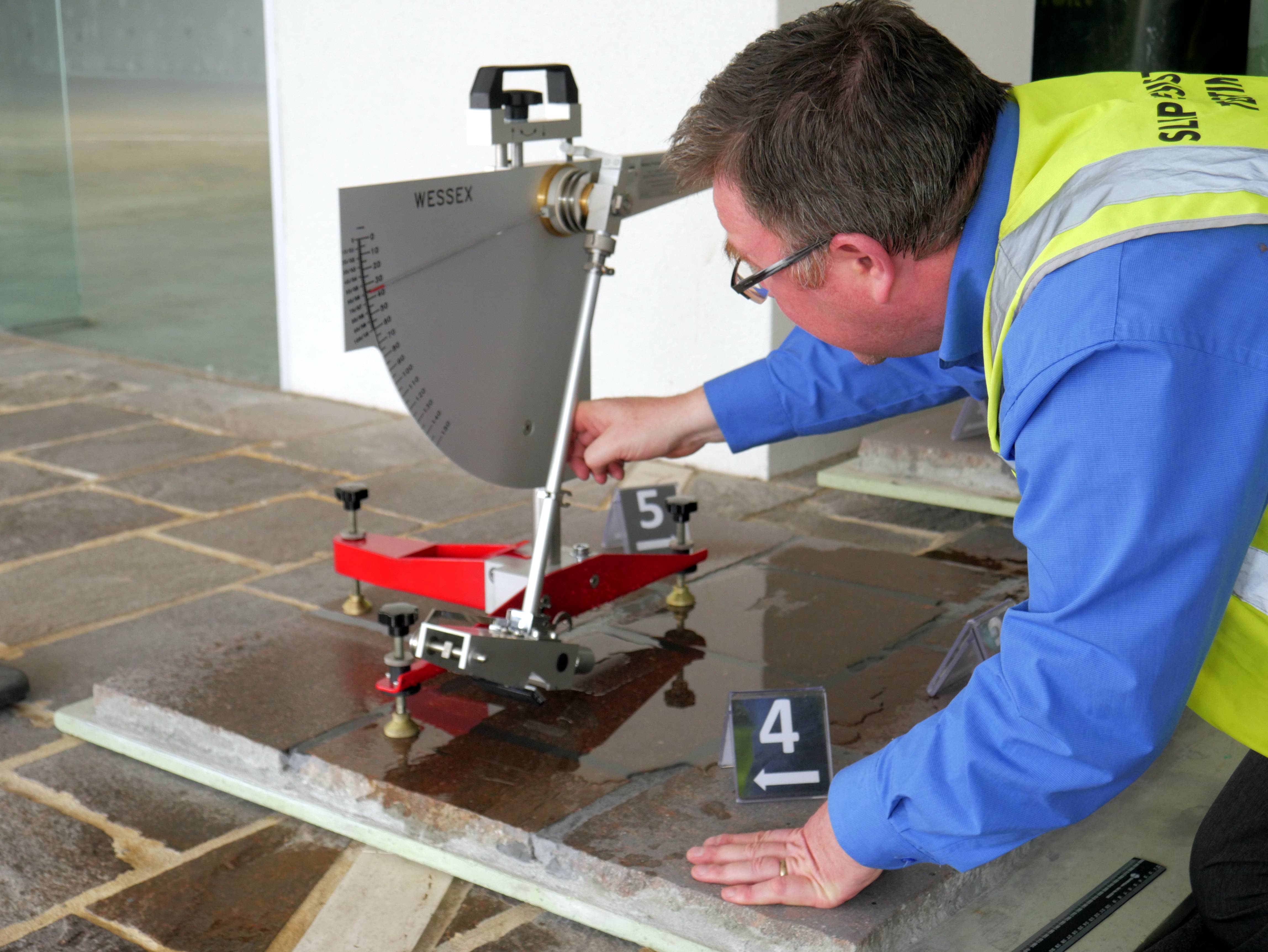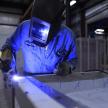
02nd
Slip testing: Wet or dry method?
By Dave Collins, Senior Consultant
A customer asked me why a floor area passed a slip resistance test using the dry method and was non-compliant using the wet method of testing.
What are these two methods?
Wet and dry tests are quite different, and performed with different apparatus. The wet test, swinging a pendulum over a surface, produces a slip resistance value. Whilst the dry test, conducted by crawling a self-propelled floor friction tester called a “tortus” over the surface, produces a pass-or-fail. Both sets of values are specified in Australian Standards AS 4663 and AS 4586.
How is it possible they produce opposing outcomes?
Whilst both methods are assessing slip resistance the main factor is that the pendulum is assessing the surface when it is wet – a “worst case” scenario. The tortus is assessing against the satisfactory coefficient of friction (COF), and applicable only for a dry surface. So it is possible that a surface is satisfactory when dry whilst the same surface is not to standard when wet. Let’s unpack that last sentence.
Based on the information set out in Table 3B of the Standards Handbook a variety of P values (correlating with values from the pendulum) are recommended based on the location and use of the surface within a building. For example, a surface in a supermarket aisle has a recommended value of P1, whilst in a commercial kitchen it is P5. The tortus test value is simply a pass-or-fail result based on being above or below 0.40 COF regardless of the location or use of the surface being tested.
So in the example of the supermarket aisle, the surface passing the tortus test would likely also pass the pendulum test as the recommended value is P1. Whilst in a commercial kitchen the surface passing the tortus (dry) test may not meet the recommended P5 on the pendulum (wet) test. The recommended P5 value being based on the high likelihood that the kitchen surface will become wet and pose a greater risk. (This is an illustrative example – a tortus test wouldn’t be applicable to a commercial kitchen in practice – see below)
In short, apparently contradictory results are possible because they are different tests, performed under different conditions, against different scales. Perennial apples and oranges.
Where/when to use wet or dry tests?
Under the Standards, dry tests may be used only on surfaces that are unlikely to become wet. An example might be a lift lobby on an office floor (not the ground or entry floor) or an area where there is a strict “no drinks allowed policy.” The tortus is a more convenient apparatus and tests are slightly less disruptive and lower in cost than those conducted using the wet pendulum.
However for effectively managing risk, the default method should be the wet pendulum test. It provides a richer result and most pendulum tests are carried out precisely because the surface being tested is in an area with some possibility of moisture under normal conditions. The dry method may be incorporated into a risk management plan where appropriate. For example rotating between dry and wet methods for each area, as an example, might be judged in the circumstances more effective risk management than a lower frequency of solely pendulum tests, or than testing fewer areas at each period.
Learn more about our Slip Testing Services Here
Categories
Recent Posts
Trichloramine and Indoor Air Quality in Swimming Pools
05th Nov
For swimmers and pool workers alike, the characteristic "chlorine smell" at indoor swimming pools is part of the experience. Howev...
Indoor Air Quality Takes Centre Stage: A New Government Report on Airborne Virus Transmission
30th Sep
The importance of Indoor Air Quality (IAQ) has gained significant attention following the release of a groundbreaking report from Australia‚...
Changes to the workplace exposure standard for welding fumes
15th Mar
On January 18, 2024, SafeWork Australia made a significant adjustment to the Workplace Exposure Standard (WES) for Welding Fume (not otherwi...

















